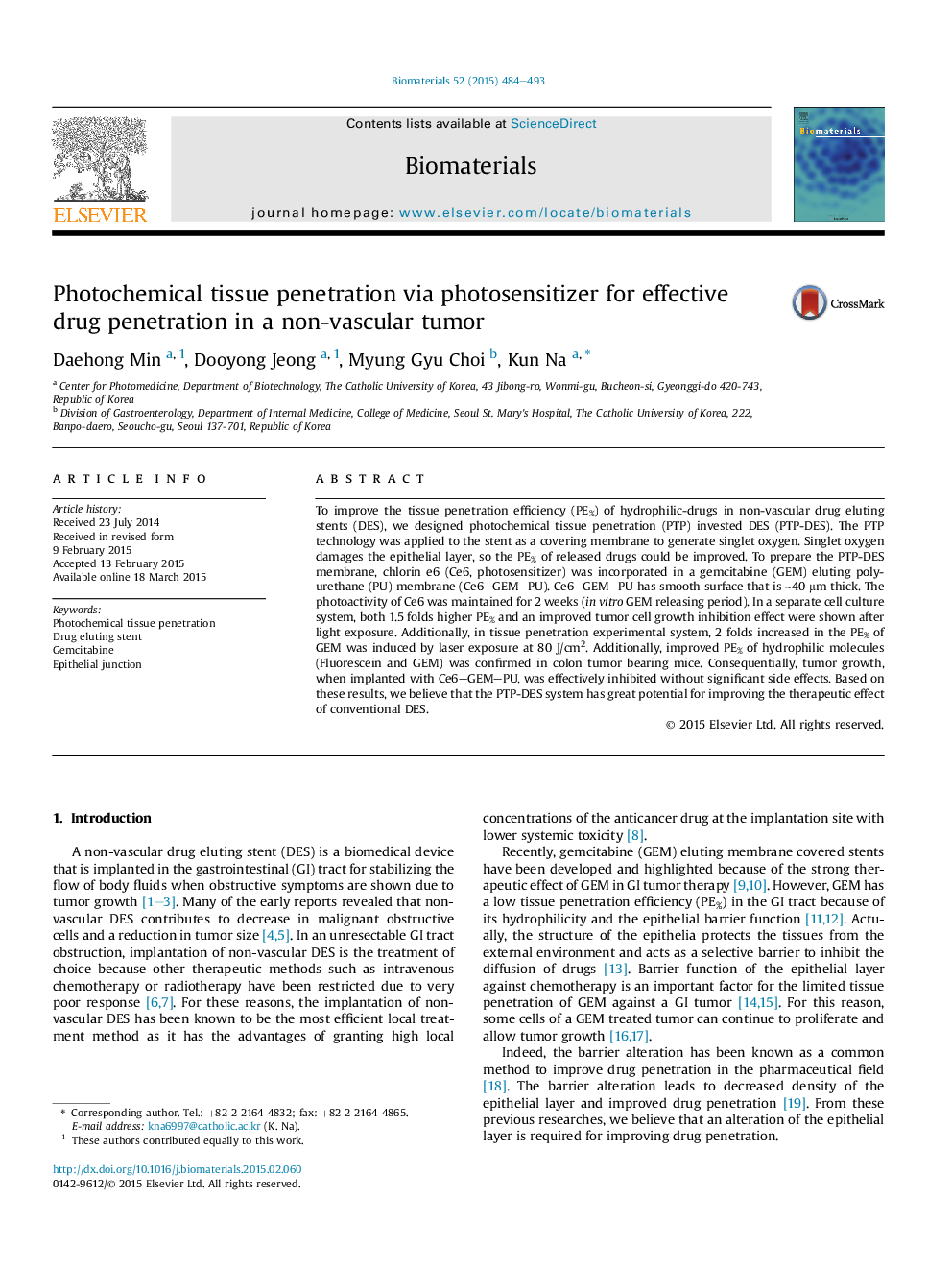| Article ID | Journal | Published Year | Pages | File Type |
|---|---|---|---|---|
| 6486110 | Biomaterials | 2015 | 10 Pages |
Abstract
To improve the tissue penetration efficiency (PE%) of hydrophilic-drugs in non-vascular drug eluting stents (DES), we designed photochemical tissue penetration (PTP) invested DES (PTP-DES). The PTP technology was applied to the stent as a covering membrane to generate singlet oxygen. Singlet oxygen damages the epithelial layer, so the PE% of released drugs could be improved. To prepare the PTP-DES membrane, chlorin e6 (Ce6, photosensitizer) was incorporated in a gemcitabine (GEM) eluting polyurethane (PU) membrane (Ce6-GEM-PU). Ce6-GEM-PU has smooth surface that is â¼40 μm thick. The photoactivity of Ce6 was maintained for 2 weeks (in vitro GEM releasing period). In a separate cell culture system, both 1.5 folds higher PE% and an improved tumor cell growth inhibition effect were shown after light exposure. Additionally, in tissue penetration experimental system, 2 folds increased in the PE% of GEM was induced by laser exposure at 80 J/cm2. Additionally, improved PE% of hydrophilic molecules (Fluorescein and GEM) was confirmed in colon tumor bearing mice. Consequentially, tumor growth, when implanted with Ce6-GEM-PU, was effectively inhibited without significant side effects. Based on these results, we believe that the PTP-DES system has great potential for improving the therapeutic effect of conventional DES.
Keywords
Related Topics
Physical Sciences and Engineering
Chemical Engineering
Bioengineering
Authors
Daehong Min, Dooyong Jeong, Myung Gyu Choi, Kun Na,
